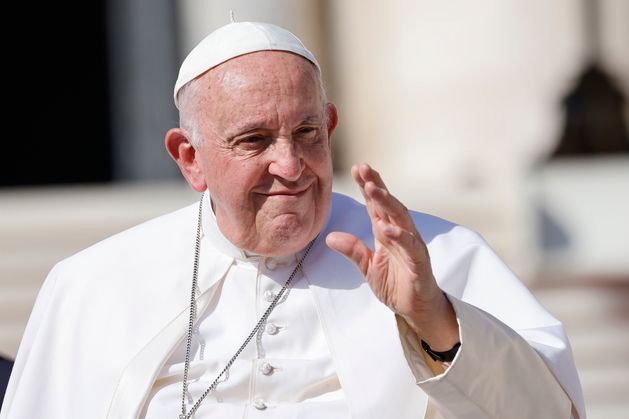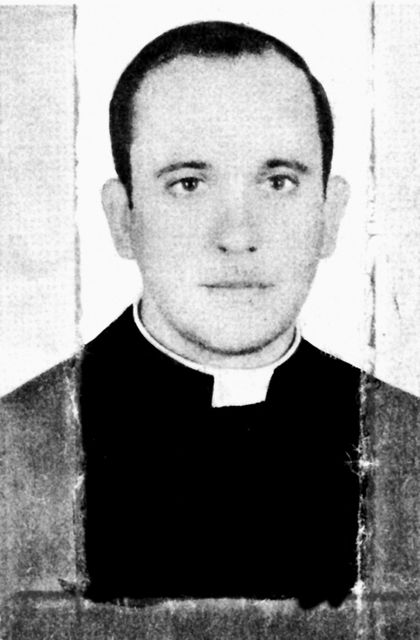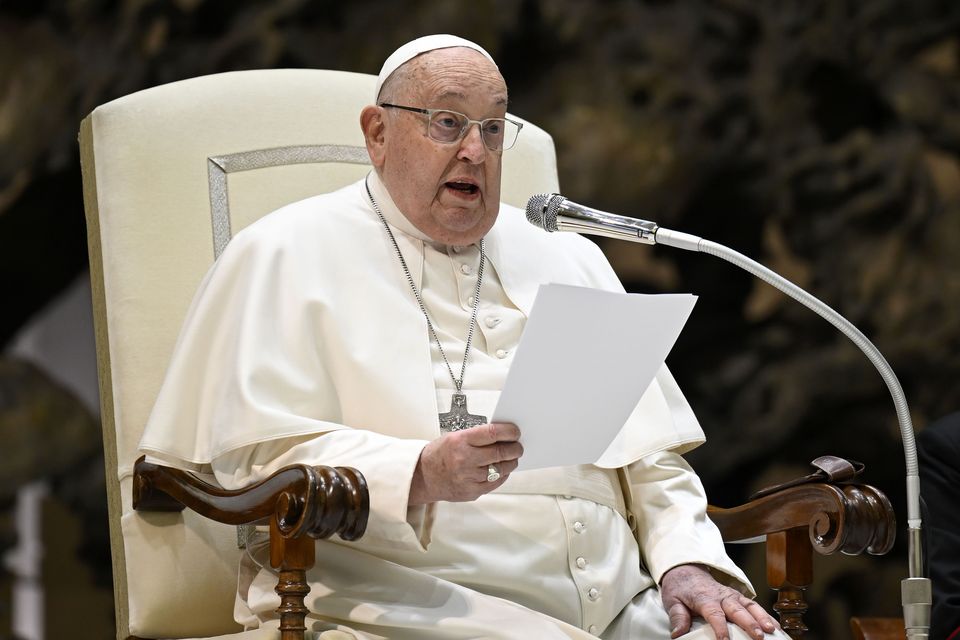Pope Francis was the first Latin American pontiff and the first Jesuit to lead the world’s 1.3 billion Catholics. For 12 years, and through four encyclicals, as well as letters, books and writings, he emphasised a strongly social and pastoral vision, which prioritised the poor, the marginalised and the environment.
From the moment he appeared on the balcony of St Peter’s Basilica on March 13, 2013, asking people to pray for him, Francis was a breath of fresh air. Many reported a sense of uplift on hearing his gentle and humble, “Buona sera” that wet evening. Eschewing the pomp and spectacle of his predecessor Benedict XVI, he choose simple black shoes and a white cassock over the German’s retro flourishes.
In keeping with his namesake, Francis chose to live in a small, simple room in the Vatican’s Santa Marta hostel rather than the splendid papal apartments. He took time to visit the sick and elderly of his own diocese of Rome, often in person; he made unexpected telephone calls to abuse victims and those who had written to him; he blessed children; embraced prisoners; and promoted mercy. Francis’ church was “a field hospital”.
The Argentinian, who before his papal election was considered by some to be austere, used his stubborn streak to stand up to the Roman curia, which defeated Benedict. He was not averse to giving the curia a public dressing down for its spiritual failings. He reformed and streamlined its structures through the apostolic constitution, Praedicate evangelium, of March 2022.
A young Pope Francis, then Cardinal Jorge Bergoglio . Photo: Reuters/Clarin/Handout
Francis’ signature project was synodality, through which he sought to promote a greater sense of the shared responsibility of all baptised Catholics in the life and mission of the church, spearheading a shift away from a pyramidal Eurocentric church. His aim was to see through the reforms of Vatican II, which had been put on ice under the papacies of John Paul II and Benedict XVI.
Amid the looming climate crisis, Francis provided bold leadership on care for the planet and biodiversity loss in his 2015 encyclical Laudato Si and its follow-on, Laudate Deum (2023). These writings garnered support from other religions, as well as the political and scientific communities.
It did not, however, endear Francis to those in favour of Donald Trump’s agenda of “drill, baby, drill”. Nor did Francis’ solidarity and courageous stance on refugees and migrants endear him to the far right, who hoped that their traditionalist social values would align with those of the church.
Francis, as the son and grandson of Italian immigrants forced to leave Piedmont in the north-west of Italy in search of work and in the shadow of Mussolini, was empathetic towards those forced to flee and build a new life in a new country due to war, tyranny or poverty.
His time at the helm was certainly not all plain sailing. Conservatives and traditionalists were appalled by his vision for the church, at times threatening schism. The fallout of clerical abuse scandals dogged this papacy, notably in Chile.
Pope Francis Photo: Vatican Pool/Getty Images.
One of the low points was undoubtedly his two-day visit to Ireland in August 2018, which took place against the backdrop of church abuse in Ireland. Outraged protestors took part in the “Stand for Truth” rally in Dublin as the papal gathering in the rain-soaked Phoenix Park attracted just over 100,000 people.
Compounding the fraught atmosphere, the former Vatican ambassador to the US, Archbishop Carlo Maria Vigano, linked to conservative factions, lobbed a metaphorical grenade at Francis in the final hours of his Irish visit, calling for his resignation and accusing him of covering up sexual abuse by disgraced US prelate Cardinal Theodore McCarrick.
Other major challenges for Francis were the issues of women and treatment of LGBTQ+ people. For former president Mary McAleese, his approach was to “flip-flop” specifically on the issues of women deacons and women priests. Francis was a reformer; he was not a radical. He had no intention of changing this teaching. Rather, he gave space for the issue to be at least discussed, something forbidden on pain of excommunication thanks to John Paul II.
We mustn’t be a Church that is fixed and frozen
Born in the working-class barrio of Flores in the Argentinian capital on December 17, 1936, Francis was the eldest of five children. After qualifying as a chemical technician, he set aside his love of tango for a vocation. The decision followed a severe case of pneumonia which saw part of his lung removed.
He joined the Jesuits on March 11, 1958 and studied in Chile and Argentina, graduating in 1963 with a degree in philosophy from the Colegio de San Jose in San Miguel. From 1964 to 1966, he taught literature and psychology, and from 1967-70 he studied theology, before he was ordained a Jesuit priest on December 13, 1969. He was appointed provincial of the Jesuits in Argentina in 1973, an office he held for six years.
His time as provincial was controversial as it coincided with Argentina’s “Dirty War”. According to Fr Thomas Reece, writing in the National Catholic Reporter, there were disagreements among the Jesuits about how to respond to the military junta. “As provincial, Fr Bergoglio was responsible for the safety of his men.”
Pope Francis in profile
His concern for two of his confreres, Fr Orlando Yorio and Fr Franz Jalics, who were threatened by the military, prompted him to try and pull them out of their ministry.
“Contrary to rumour, he did not throw them out of the [Jesuits] and therefore remove them from the protection of the Society of Jesus,” Fr Reece explained. However, there were disagreements later over whether he did as much as he should have for them.
Appointed Archbishop of Buenos Aires in 1998 and cardinal in 2001, he arranged for the Argentine bishops to ask forgiveness for not having done enough during the “Dirty War”.
His autocratic style led to a period of reflection and isolation within the order, but in time he became an even stronger champion of the poor. “My people are poor, and I am one of them”, he said repeatedly as he encouraged a culture of encounter and solidarity, opposing the throwaway culture and critiquing capitalism and rampant consumerism. His encyclical Fratelli Tutti encouraged people to hear not just the cry of the earth, but also the cry of the poor, and to challenge not just individual vice but structural sin.
Through his travels to many unexpected places, including South Sudan, Indonesia and Timor Leste, Iraq, South-East Asia and Morocco, he fostered interfaith dialogue and religious tolerance. He himself described his visit to Mongolia as his “most ‘eccentric’ apostolic journey”, where a tiny Catholic community inhabits a vast territory. His aim was to show his closeness to his people, especially those small, forgotten minorities on the margins.
Francis’ health declined in recent years, forcing him to use a wheelchair. He had a colon operation in 2021 and was hospitalised twice with bronchitis, notably forcing him to cancel his attendance at the Cop28 climate summit in Dubai.
Having had part of his lung removed as a young man, he was susceptible to lung and bronchial infections. However, unlike Benedict XVI, he ruled out resigning a number of times.
At the start of this year, Francis made history by becoming the first pontiff to publish his life story while still in office. Hope was originally intended for publication after his death, but he changed his mind so it could coincide with the beginning of a papal jubilee which is themed “Pilgrims of Hope”.
Carlo Musso, co-author of Pope Francis’ autobiography, said the word that embodies his outlook, apart from humility, was onward. “We mustn’t be a Church that is fixed and frozen,” Francis warned and stressed that rigidity is not Christian, because it denies the movement of the spirit.
“Rigidity is sectarian. Rigidity is self-referential. Rigidity is a daily heresy.”
Pope Francis will be laid to rest in the Basilica of Santa Maria Maggiore, the church he returned to after every papal visit overseas to pray. The location is a break with Vatican tradition, as popes are usually buried in the crypt beneath St Peter’s Basilica. As he underlined in the last chapter of Hope: “The Church will go on. I am just one step in its history.”
#Pope #Francis #obituary #Jesuit #lead #Catholic #Church #eschewed #pomp #champion #poor #marginalised










